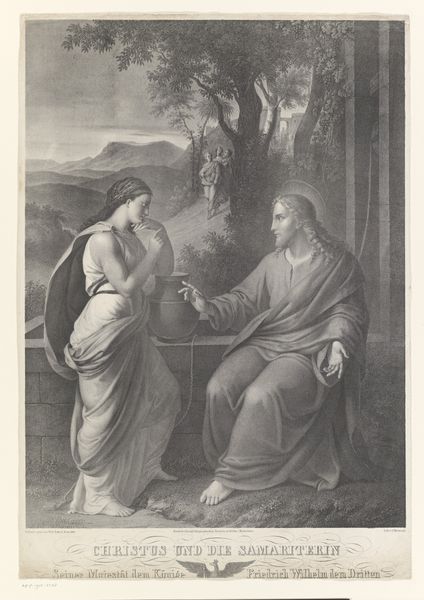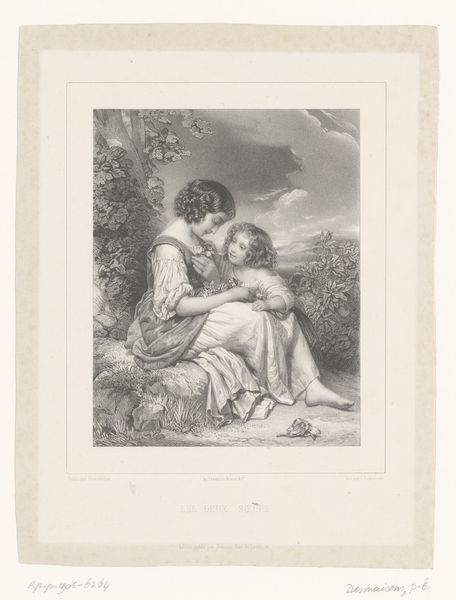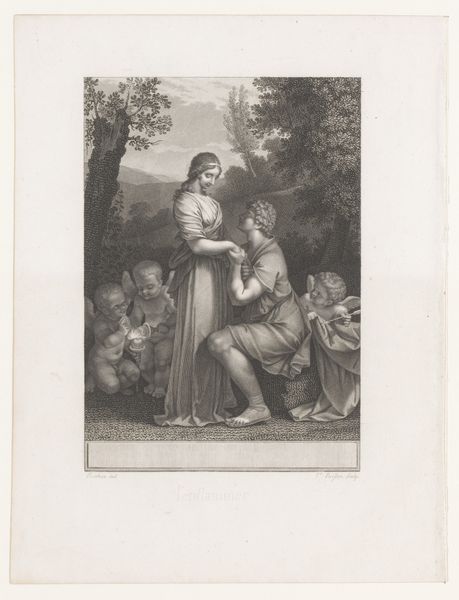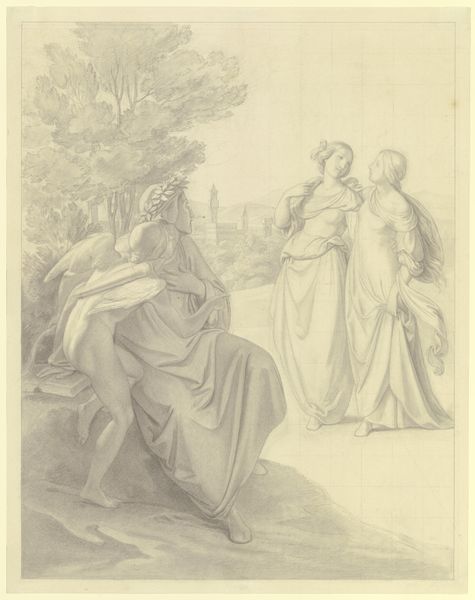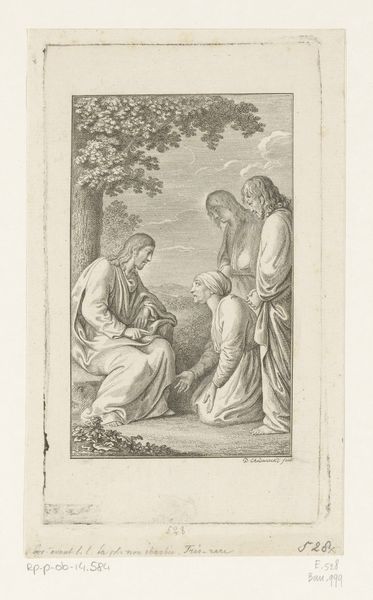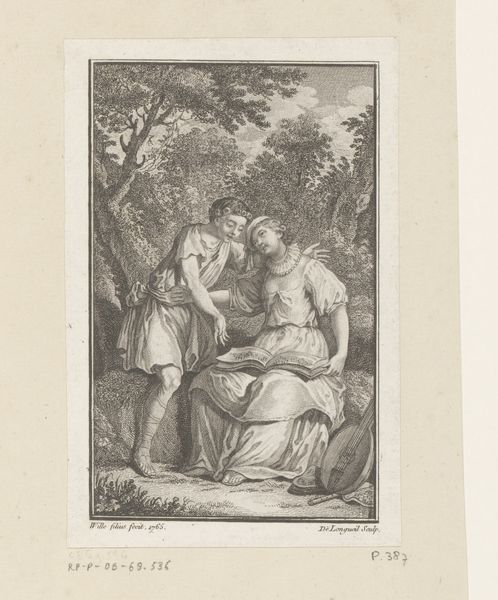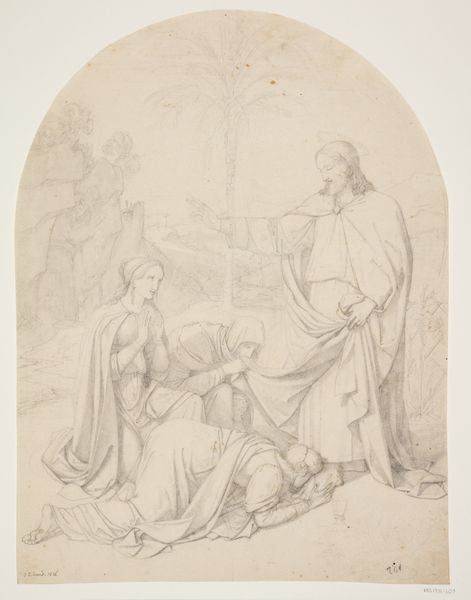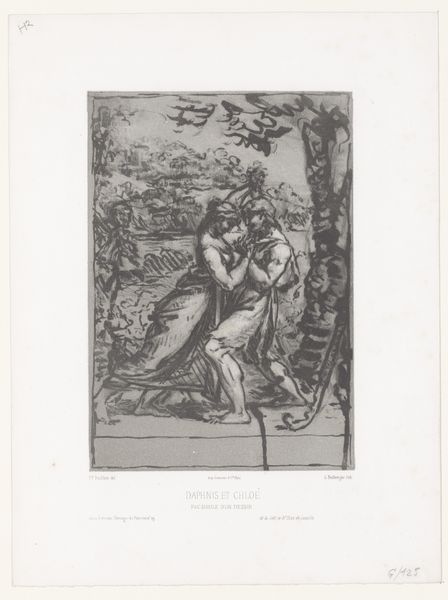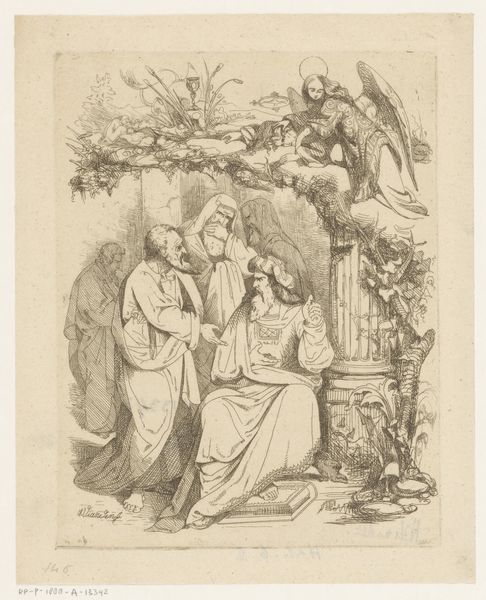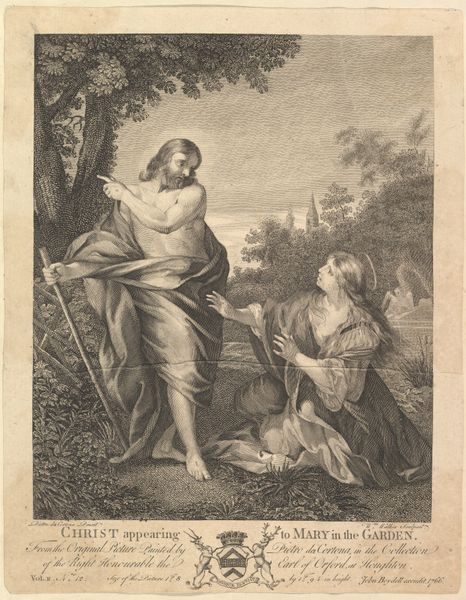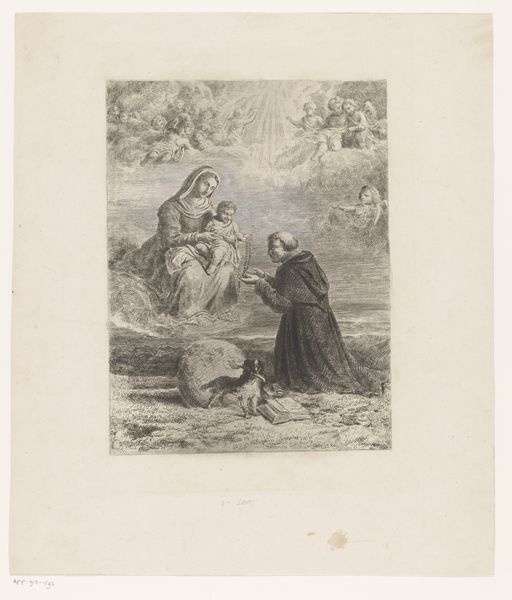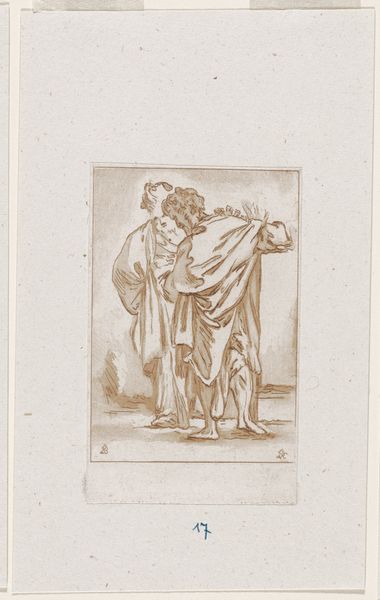
Fotoreproductie van een tekening van Maria en Johannes de Doper bij het graf van Christus 1860 - 1900
0:00
0:00
print, engraving
#
portrait
# print
#
figuration
#
line
#
history-painting
#
engraving
Dimensions: height 138 mm, width 98 mm
Copyright: Rijks Museum: Open Domain
Curator: This engraving from between 1860 and 1900, attributed to Verlag von Hanfstaengl's Nachfolger, is entitled "Fotoreproductie van een tekening van Maria en Johannes de Doper bij het graf van Christus," or "Photographic reproduction of a drawing of Mary and John the Baptist at the tomb of Christ". What are your immediate impressions? Editor: I'm struck by its subdued, almost mournful tone, achieved through the delicate linework and monochromatic palette. There’s a clear emphasis on the emotional weight of the scene. Curator: Absolutely. And that emotional weight is tied to the portrayal of Mary, the mother of Jesus. This image provides insight into how female suffering, particularly within a religious context, has been historically represented. Her downcast gaze speaks volumes. How does her relationship to John here reinforce these notions of grief? Editor: The composition, though somber, exhibits a rather formal arrangement. The figures of Mary and John create a balanced, almost symmetrical pairing in the foreground. And these robes, with their heavy drapery, emphasize the gravity of the narrative, framing and supporting, perhaps even comforting her. Curator: Indeed. One can view this not simply as a representation of sorrow, but perhaps of strength in shared adversity, where women were primary supporters in their communities and maintained ritual, maintained familial bonds in crisis. Is John an adequate source of emotional strength here? Or are we seeing another version of the male savior complex projected on the image? Editor: A complex question, I'd say. Although the figures may indeed seem overly sentimental, their shapes clearly interlock and function symbiotically within the composition, in an almost choreographic rendering of solace. Their cloaks move together in almost a single visual sweep. Curator: Regardless, this piece offers an opportunity to analyze religious historical painting from a variety of intersectional standpoints. Editor: It does invite consideration on the many elements present in the making and interpretation of art objects! Thanks for that.
Comments
No comments
Be the first to comment and join the conversation on the ultimate creative platform.
